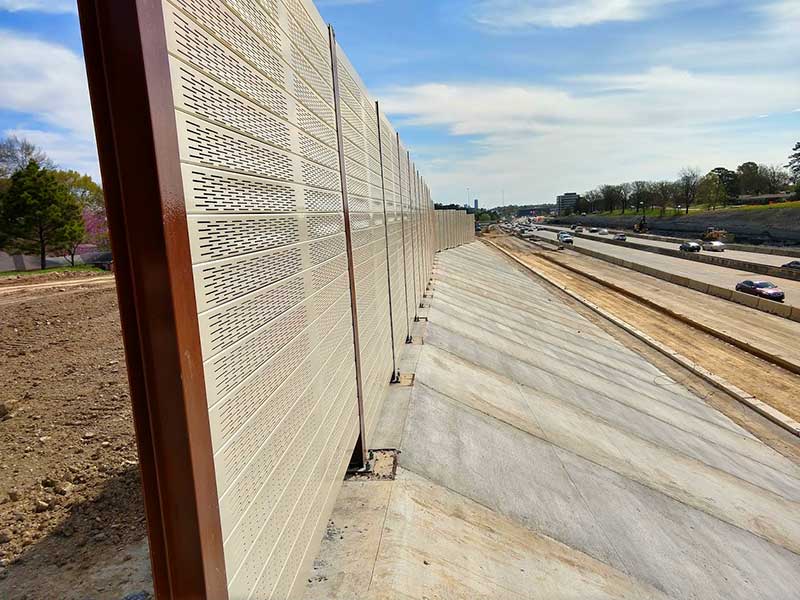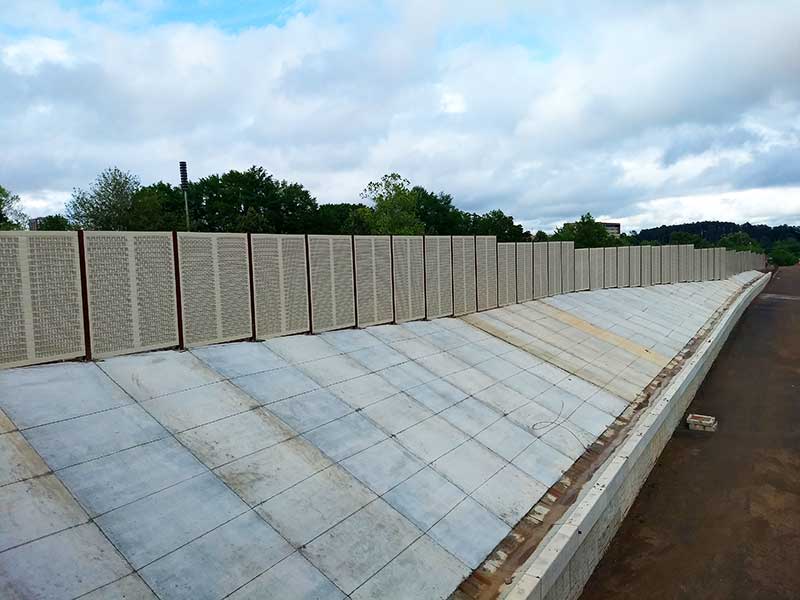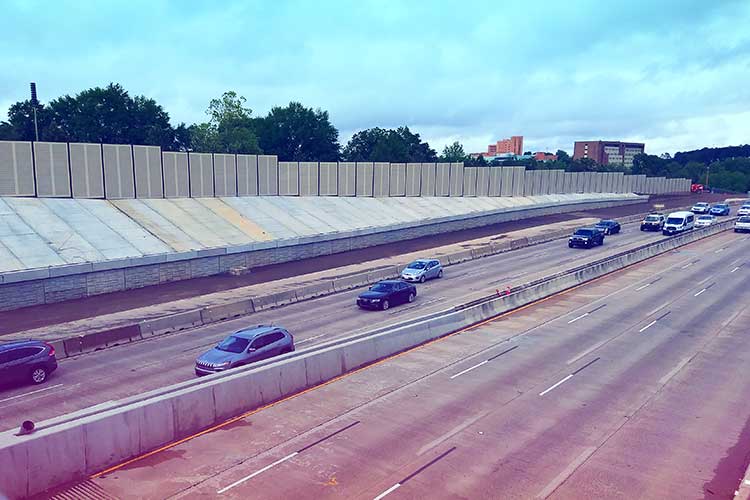United States historians will remember 1972 as the year that a break-in at the Watergate Office Building in Washington, D.C., ignited a scandal that would lead to the resignation of an American president.
Sports fans will remember 1972 as the year the Dallas Cowboys beat the Miami Dolphins in Super Bowl VI, 24-3.
And pop culture enthusiasts will remember 1972 as the year the film “The Godfather” hit theaters.
What many people likely won’t remember about 1972 is that it was the year the U.S. Environmental Protection Agency passed the Noise Control Act.
Despite its lack of notoriety, the Noise Control Act—which remains in effect today, although it is largely unfunded—ultimately changed the American landscape. For example, consider that since the program’s origin, acoustic noise barriers have been constructed along thousands of miles of roadways across the country.
Though seemingly uninteresting, there’s more behind the construction of road noise barriers than you might imagine.
Need road noise barriers?
Highway noise reduction barriers are like the umpires of the road—they are most likely noticed only when something goes wrong.

When determining whether a noise barrier is needed, states need to consider federal law as well as their own policies. Cost and density of the barriers are also part of the equation.
But, ultimately, the question asked to determine if noise barriers are needed is: Will new construction or renovation cause an increase in noise above a certain decibel level or an increase of a particular amount that impacts houses, people, outdoor gathering activities—known as “receptors”—beyond the roadway?
When road noise barriers were originally erected in the 1970s, the standard type was a concrete reflective barrier. Later, absorptive noise barriers were created. “While both are designed to stop noise or protect residences from noise, function is the difference,” said Don Nichols, assessments section head of the Environmental Division of the Arkansas Department of Transportation.
Reflective noise barriers simply direct the noise away from receptors, including back into traffic, while absorptive noise barriers remove the noise from the environment.
But how does a road noise barrier absorb the sound?
Aaron Clauson, a civil engineer with Contech Engineered Solutions, said absorptive noise barriers use technology similar to that used in walls in noise-proof rooms. You have to have a structural material housing an acoustical material.
For example, “you take the concrete and mix it with wood fibers and cast a spongy concrete center,” Clauson said, “so there’s a sponge on the inside and traditional precast on the outside.” The spongy center causes a sound-deadening effect. For lightweight panels, the structural housing is extruded PVC with an absorptive material placed on the inside of the structural panel.

Although concrete sound walls—for both sound reflection and absorption—are still used, lightweight sound walls have come into use in the past decade or so. “The actual material items are comparable and they cost about the same,” Clauson said, “but because they are lightweight there’s no need for a special deep foundation system.”
Material cost
While lightweight and concrete materials are similar in cost, construction costs are lower. Less manpower is required since panels can be put in place by just two people and there’s no need to drill deep foundations because drilled shafts or driven piles are sufficient for lightweight sound barriers (absorptive or reflective).
Finally, lightweight sound barriers can accommodate bigger spans between the posts, meaning fewer posts are needed to cover the same amount of territory.
Despite the cost savings for lightweight, including absorptive sound barriers, they are still more expensive than concrete sound walls. The calculations used to determine what type of wall to erect and from which material, however, are dependent upon each individual state.
The state of Arkansas, for instance, chooses absorptive if a wall is warranted on only one side and reflective if a wall is required on both sides. “Absorptive walls require extra tech and are more expensive to build,” Nichols said, “but it’s less money than building two reflective walls.”
With states already scrambling due to insufficient funds to complete needed infrastructure projects, costs are a primary consideration when choosing materials for a job. Nichols said proximity of material suppliers, which ties into shipping costs, is also a concern when states choose which type of wall and material—concrete or lightweight—to use.
Longevity?
Another factor transportation departments must consider when calculating costs is the longevity of lightweight sound walls—will they hold up as long as concrete?
There is no doubt that absorptive sound walls do more to limit sound pollution since reflective noise has to go somewhere. That noise can prove bothersome to drivers or people living beyond the noise barrier. Although the cost of lightweight absorptive sound barriers is falling, they will be used less often until their cost is closer to reflective sound barriers.
So, next time you’re driving on a highway, take notice of the sound barriers. There’s more to them than meets the eye—or ear.











